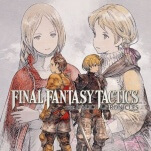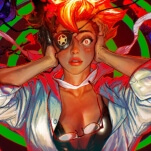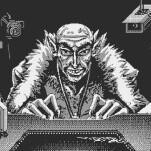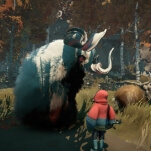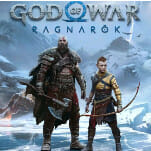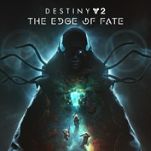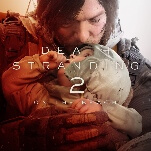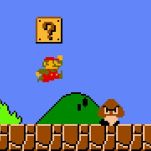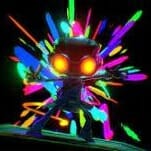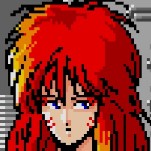The 10 Best Mobile Games of 2019

2019 is the strongest year we’ve seen for mobile games since early this decade, and for one major reason: Apple Arcade. (Sorry, everybody without an iOS device.) The omnipresent free-to-play model, with its microtransactions and constant fees, long ago destroyed the market for games with a flat price. Consumers wouldn’t take a chance on a game if the download wasn’t free, even if they wound up spending far more on a game in the long run after regularly pumping in new payments. Thus incentivized, developers focused on games that could scratch that obsessive itch, and largely quit designing mobile games that were discrete, fully realized experiences with a clear beginning and end. Apple, realizing its storefront was being flooded with poor product, has tried to restore some balance to the mobile marketplace by launching Apple Arcade, a subscription gaming service that offers dozens of games of all types. The company paid top designers to make games for Apple Arcade without having to worry about monetization, resulting in a number of artistically rewarding games that aren’t constantly trying to suck more money out of the player. 2019 recaptured a bit of the spark that made mobile gaming so exciting and inspiring a decade ago, when it felt like a brave new era for game design. It’s disappointing that people who don’t own iOS devices—or don’t want to pay the five dollar monthly fee—can’t experience these games, but those who do have iPhones, iPads or Apple TV are able to enjoy some of the best mobile games in years. Not all of the games below are Apple Arcade exclusives, or even just mobile games—some are available for PC, consoles, and even non-Apple mobile devices. Most can be found only on Apple Arcade, though. They’re all worth tracking down, however you might be able to play them.
10. The Pinball Wizard

The Pinball Wizard combines two things I love: pinball and long, shaggy beards. Okay, your eldritch silver ball doesn’t always have a Gandalf beard—it’s something you have to actively choose for it to wear. (Every game NEEDS a feature where you can add a huge beard to any character simply by touching the screen.) This mobile mashup adds RPG elements to a genre that normally doesn’t have them, namely video pinball. You have to climb the 20 or so floors of an evil tower, with each floor being its own small pinball game. Flippers at the bottom of the screen keep your character from plummeting off the side of the tower, and also lets you aim its attacks as you send it hurtling into enemies. The bumpers you’d find on a pinball machine double as monsters that need to be killed or barrels full of gold, health and experience points. As you collect money and XP, you can unlock new “spells” that turbocharge your ball with temporary special skills, and increase your total health and attack strength by leveling up. It can be extremely challenging in spots—certain enemies are inordinately powerful, and falling off the bottom or side of a stage deals a ton of damage. Still, it captures that addictive thrill found in the best mobile games, where it can be played in quick bursts whenever you have a free moment, while simultaneously sinking its hooks so deeply into you that you want to keep playing it as much as possible. That drip feed of progression, with new levels and new skills and new
abilities, is hard to pass up.—Garrett Martin
9. Manifold Garden

This abstract, geometry-based puzzler by artist William Chyr received universal comparisons to the art of M.C. Escher when it launched on Apple Arcade in October, and for good reason. The core concept of three-dimensional spaces that seem to loop with no end comes right out of the Dutch artist’s dorm poster playbook. Chyr turns it into a gorgeous, confounding game that will vex you for hours while constantly impressing you with its mind-bending visuals. It’s not just on Apple Arcade—you can play it on PC and it will soon be on the PlayStation 4—but the immediacy of your phone makes it even more powerful.—Garrett Martin
8. Card of Darkness
Zach Gage and Adventure Time’s Pendleton Ward teamed up for this surreal RPG-styled card game, which is one of the most visually arresting games in recent memory. It’s another game where you have to fight your way through the floors of multi-story dungeons, but instead of pinball it’s a card game built on a 5 by 5 grid. Each square has a deck of cards on it, with only the top cards on the bottom row being face up at first. As you get to the bottom of one square’s deck, the top cards on the decks on adjacent squares will be flipped over. There are five main types of cards: weapons, gold, spells, health potions, and, most commonly, enemies. The monsters all have different skills, which sometimes play off of each other to make them even deadlier. The goal is to make it from the bottom of the grid to whichever square on the top row has the exit (it changes randomly every time you play). Weapons work on an even-odd system—every enemy card has a number on it representing its strength, and weapons have a corresponding number. If the weapon’s number is higher than the enemy’s, it’ll kill them without you taking any damage; if the weapon’s number is lower, you’ll kill the enemy and remove their card from play but the difference in numbers will be inflicted upon your character as damage. If you use a weapon card with an even number on an enemy with an odd number (or vice versa), you’ll still kill the enemy, but it’ll permanently break your weapon. You don’t have to pick up every card on the grid, but once you start pulling cards from a deck you have to turn over every card in that deck in order to exit the floor. This might sound confusing, and, frankly, it is the first few times you play, but once you get everything down you’ll be returning to this one whenever you have free time and staying up late every night playing just one more dungeon. The only real drawback with the game is its difficulty, which is heavily lucked-based; sometimes cards will be distributed fairly evenly, with swords and health potions popping up almost as often as monsters. Other times, though, you’ll find yourself pulling up nothing but bad guys at the top of every deck, leading to a quick and unavoidable death. That random distribution of cards is a major part of the game’s structure and appeal, but it also can make everything a little too frustrating at times. Still, with its whimsical artwork and novel approach to dungeon crawling, Card of Darkness is a game that’s hard to put down.—Garrett Martin
7. Sky: Children of the Light

Thatgamecompany, the studio behind Paste favorites like Flower and Journey, released its first game in seven years, and the first game that it hasn’t made while under contract to Sony. Sky: Children of Light revisits some of the concepts behind Journey, from the lack of overt guidance, a pervading sense of mystery, and a minimal approach to social interaction that’s still an integral part of the game, and marries them to a powerful sensation of flight. Sky is very much a thatgamecompany game, and that stark, artistic sensibility resonates with you, it’s a must play.—Garrett Martin
-

-

-

-

-

-

-

-

-

-

-

-

-

-

-

-

-

-

-

-

-

-

-

-

-

-

-

-

-

-

-

-

-

-

-

-

-

-

-

-










